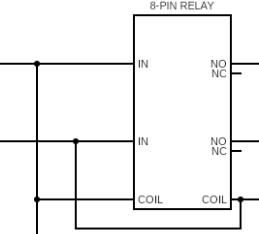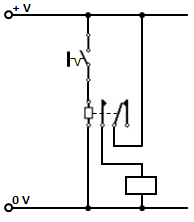These are the relays I have: https://www.amazon.com/dp/B07QXXNGHR
So simply put, the circuit I'm trying to complete is using a single 24V/8A source, and one of my suspicions as to the trouble I'm having is in the way that I'm attempting to energize the coil and feed the commons with the same power source. So I'm piggybacking the coil and commons(IN) on the same feed, if that makes sense.
Is there an inherent problem with using the same power source to feed both of these parts of the relay?


